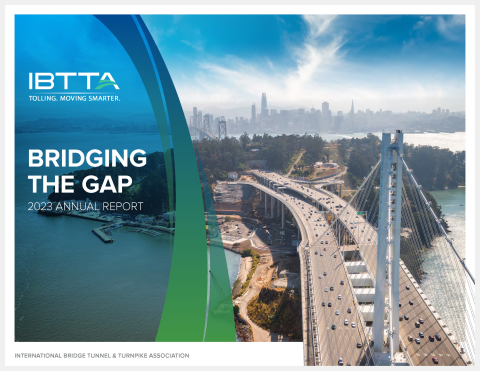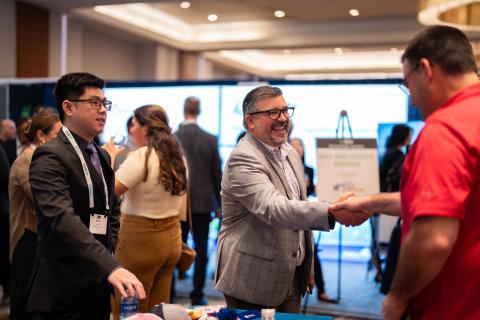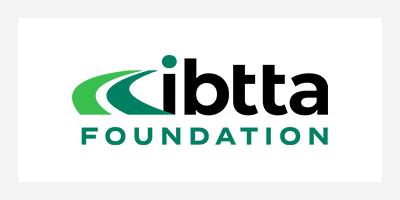- Home
- IBTTA Insights
- Tolling U.S. Interstates: Lessons Learned from Missouri's Interstate 70
Tolling U.S. Interstates: Lessons Learned from Missouri's Interstate 70
The following article is written by Gretchen Ivy, HNTB Corporation’s project manager for the I-70 dedicated truck lanes project in Missouri and a firm wide resource for the Federal Highway Administration’s Interstate System Reconstruction and Rehabilitation Program. It originally appeared in IBTTA's Tollways publication last summer.
There has never been a better — or more critical time — to consider tolling U.S. interstates. According to the U.S. Department of Transportation’s 2008 Conditions and Performance Report, it is estimated that an annual cost of $24.8 billion is needed just to sustain the current condition and performance of the Interstate Highway System for the next 20 years. As the Highway Trust Fund continues to shrink, infrastructure needs are overwhelming without even considering expansion. Tolls are a sustainable source for operational and maintenance funds, and research conducted within HNTB Corporation’s America THINKS survey has shown the American public is more likely to support roads and bridges funded by tolls than by increased gas taxes. The only federal program that allows tolling of existing general-purpose Interstate highways today is the Federal Highway Administration’s (FHWA) Interstate System Reconstruction and Rehabilitation Pilot Program (ISRRPP). Only three slots were autho- rized within the program, and today, all are filled: Missouri, Virginia, and North Carolina have received provisional conditional approval for Interstate 70, and Interstate 95 (for both VA and NC), respectively. Other states applied but were not successful in obtaining FHWA approval.
"Pick the right project. Not every interstate is going to be right for tolling existing interstate capacity. Understand what you are trying to get out of your tolling project before you go too far down one program path."
Additionally, several states were actively working on applications for program approval at the time of North Carolina’s recent program selection in February 2012 and there remains significant support to have the available slots within the ISRRPP expanded. Missouri is the frontrunner. The state has made significant strides toward implementing its I-70 project, including completion of the National Environmental Policy Act process and development of a four-state partnership with Illinois, Indiana, and Ohio to improve the national, 800-mile I-70 corridor.
So why has the Missouri Department of Transportation (MoDOT) been successful at gaining provisional program approval to toll when other states have not?
Since 2000, HNTB Corporation has been assisting MoDOT with a wide range of I-70 corridor planning, environmental, and toll feasibility studies to determine the best solution for improving I-70. As part of the corridor planning services, HNTB partnered with MoDOT to prepare the Federal ISRRPP application for the corridor, acted as the general engineering consultant for the tiered National Environmental Policy Act (NEPA) process, analyzed toll financial feasibility, investigated intelligent transportation systems and related technology applications, and conducted public and stakeholder education and outreach services Here are best practices gleaned from this experience with MoDOT’s I-70 application.
Pick the Right Project
Not every Interstate is going to be right for tolling existing Interstate capacity. If you are interested in value pricing, HOT lanes, express lanes, or only tolling new or non-Interstate capacity, this program may not be the best choice. That is why the FHWA’s tolling and pricing team is available to help select the best program for each project with the submission of an initial expression of interest. Understand what you are trying to get out of your tolling project before you go too far down one program path.  Missouri’s I-70 represented an excellent candidate for the program. It is located in the heartland of the country and connects with major north-south Interstates in both Kansas City and St. Louis; heavy truck traffic on I-70 has continued to grow and is anticipated to more than double by 2030. As one of the first segments of the Interstate Highway System (IHS) to be built in the 1950s, it’s never been reconstructed. MoDOT makes continuous major reinvestments just to maintain the highway, and at this point in its lifecycle, the pavement — and aggregate underneath — has reached the end of its useful life. The bottom line: an entirely new facility is needed, one with at least one more lane in both directions. Depending on the improvement concept selected, that will cost approximately $3 billion to $4 billion, a price tag that would require MoDOT to shelve nearly all other scheduled projects for a decade if funded through traditional means.
Missouri’s I-70 represented an excellent candidate for the program. It is located in the heartland of the country and connects with major north-south Interstates in both Kansas City and St. Louis; heavy truck traffic on I-70 has continued to grow and is anticipated to more than double by 2030. As one of the first segments of the Interstate Highway System (IHS) to be built in the 1950s, it’s never been reconstructed. MoDOT makes continuous major reinvestments just to maintain the highway, and at this point in its lifecycle, the pavement — and aggregate underneath — has reached the end of its useful life. The bottom line: an entirely new facility is needed, one with at least one more lane in both directions. Depending on the improvement concept selected, that will cost approximately $3 billion to $4 billion, a price tag that would require MoDOT to shelve nearly all other scheduled projects for a decade if funded through traditional means.
Tell Your Project’s Story
MoDOT had the history and relevant data ready at its fingertips to demonstrate the need to reconstruct and expand the Interstate and effectively convey why the I-70 project should be selected for the program. Data on the Interstate’s age, condition, intensity of use, other performance metrics, and key corridor issues were critical to describing the overall need for the project. One possible I-70 toll concept calls for freight movement within dedicated truck lanes. In fact, truck traffic on I-70 makes up nearly 30 percent of the daily traffic, is growing more than twice as fast as passenger traffic, and is projected to double by 2030. Dedicated truck lanes would be specifically used for qualifying trucks; are designed to handle the additional weight of the vehicles; are typically separated from other passenger vehicle traffic by barriers or grass medians; could have their own interchanges at locations that have heavy truck traffic with separate entrance and exit ramps; and could be used by all traffic during specific time periods for incident management, like lane closures for accidents or construction. Tolling with dedicated truck lanes offers the trucking industry — as well as the general traveling public — lots of efficiencies including enhanced safety, the potential to use longer/heavier truck loads, higher reliability (to ensure just- in-time delivery), more efficient movement of goods, and reduced insurance costs.
Educate Your Customer
Tolling and pricing often are new concepts, and public outreach for these types of projects involves a greater focus on education than traditional roadway projects. It is critical the public understands why the project cannot be paid for through other means, such as the fuel tax. Outreach efforts need to communicate the critical function that tolls play in providing corridor benefits, such as a sustain- able maintenance source, as well as information on how and by whom tolls will be collected. A major success factor for MoDOT has been the value provided by a robust public involvement program. It has facilitated the factoring of public input into the improvement strategy. One innovative and award- winning tool developed for this project was the online public meeting. It meaningfully and cost-effectively engaged motorists, travelers, and other stakeholders across the cor- ridor. A 3-D video simulation and electronic versions of informational displays are available for public viewing at www.improvei70.org. Robust engagement also has been crucial with the trucking industry, convenience store operators, and petroleum marketers, due to the calls for freight movement within dedicated truck lanes. Several ancillary studies focused on national trends, and the impacts of freight movements, both within the corridor itself as well as origin-destination impacts in the Kansas City and St. Louis metropolitan areas. Throughout this process, DOT lead- ership has been engaged to ensure commitment to the corridor vision, and to regular and proactive coor- dination with FHWA throughout the application process.
Consider Private Sector Involvement
With today’s limited transportation funding, demonstrating you can bring private sector financing to the table to complete the project faster and cheaper is an added value. The private sector can be involved in Interstate tolling projects through a wide range of public-private partnership (P3) project delivery mechanisms. You will need to evaluate the pros and cons of different project governance and delivery options to decide if public or private ownership of the proposed project is the best approach. MoDOT is actively weighing its options.
Secure Your Legislation
When a state, local, or private agency decides to move forward with tolling an Interstate, there are several legislative issues that may need to be addressed prior to implementation. Does your state have the necessary legislative approvals to toll? To issue bonds? Does your state allow public-private partnerships to take advantage of private sector involvement? The challenge at the state level to enable tolling is one of the key factors preventing MoDOT’s I-70 project from moving forward toward implementation.
"With today’s limited transportation funding, demonstrating you can bring private sector financing to the table to complete the project faster and cheaper is an added value."
HNTB’s role as a trusted adviser to transportation agencies has provided the firm with a unique opportunity to observe how various states have developed, or are developing, P3 legislation. From that vantage point, here are several best practices for maximizing P3 value:
- Keep the language simple. The best P3 authorizing legislation often is just a few paragraphs.
- Establish best-value selection criteria. To ensure the preferred project is advanced, the sponsoring agency should be able to choose the right bid, which may not always be the lowest bid.
- Ensure flexibility. Sponsors should be able to take advantage of different project types, concession lengths, and the option to perform cursory reviews of unsolicited bids.
- Limit the barriers to contract execution. The sponsoring agency should attain the appropriate departmental/legislative authority to execute procurement without further legislative or governmental approval.
- Include implementation enhancements, e.g., video tolling and collection enforcement provisions, to maximize revenue.
- Allow public-public, as well as public-private partnerships. Perform a detailed inspection of current legis- lation and either “clean it up” or add a statement that the statute super- sedes any conflict with existing law.
- Permit co-mingling of federal, public, and private funds. The legislation should ensure maximum flexibility by enabling the partnership to use multiple funding sources to deliver a project; and owners can then enter into different forms of P3 contracts as applicable to each project2.
Understand How Revenues Can be Used
Tolling should provide a dedicated operations and maintenance revenue stream to keep the Interstate in good operating condition with the safe and reliable standard of care the traveling public expects ...for the long term. In fact, as part of ISRRPP, revenues collected from the tolled interstate facility have restrictions on their use and cannot be used “off-corridor.” It’s a major reason some applications have been rejected. Toll revenues must be used for debt service, reasonable return on investment — if private industry financing is involved — and any costs necessary for keeping the facility in good condition: operations and maintenance, reconstruction and rehabilitation, as well as corridor capacity expansion. Excess toll revenues cannot be used for general state funding or other transportation system needs. Additionally, Interstate maintenance funds may not be used on a facility for which tolls are being collected under this program. However, regular federal-aid highway funds may be used to fund improvements, in addition to the toll revenues collected.
Factor in NEPA
Your project will need to have successfully completed the NEPA process before approvals can be granted within the program. The social, economic, and environmental impacts of toll financing the project also must be evaluated within NEPA. The program gives priority to those projects that can demonstrate fewer impacts to the natural and manmade environment, which also helps streamline the environmental approval process and project schedule. And — if your project has already evaluated tolling and received NEPA approvals — you have jumped over one of the toughest and most time consuming hurdles for successful program approval. MoDOT initiated the I-70 tiered NEPA process in advance of the ISRRPP application process, which provided significant data for use in the application and demonstrated the state’s commitment to moving the project forward quickly. For MoDOT, a tiered Supplemental Environmental Impact Statement (SEIS) was the key to demonstrating the value of dedicated truck lanes.
Develop a Sound Tolling Plan
As part of the application process, a state must demonstrate it has a tolling plan for the corridor, including the proposed toll rates, toll collection points, plans for manual and/or electronic toll collection, and the findings of the traffic and revenue analysis performed for the corridor. Within the application, the FHWA wants to ensure the tolling plan for the corridor is fair and equitable to the traveling public, local communities along the corridor and neighboring states, and that tolling will be evaluated within the NEPA process for the project.
Learn by Example
Missouri, Virginia, and North Carolina have all been successful at achieving provisional program slots. Review- ing their applications, consulting with their staff, and understanding the feedback they received from the FHWA can help streamline and strengthen future state applications. While all available slots in the program are filled today, future federal transportation re-authorization could enable additional slots within the program, or allow more flexibility to toll existing Interstate general-purpose capacity.
Be Ready to Compete
Missouri understood the need to put together a competitive application to successfully gain federal approval to toll I-70. The program is competitive and very limited, and many states are vying for a slot. MoDOT had to demonstrate that its I-70 project best met the eligibility requirements and that a sound plan was in place to get the project done. Today, no state has successfully implemented their ISRRPP tolling project. It remains to be seen if Missouri, North Carolina or Virginia will be the first in the nation to fully implement existing general-capacity Interstate tolling. That first successful project could change the way existing Interstates are maintained and expanded for the next generation of Interstate travelers. Tolling existing, general-purpose Interstate capacity can require a sea change in how state DOTs do business. When selecting the right project, other questions decision makers should ask include:
- What can you do with “more”? Tolling an Interstate frees up limited federal Interstate maintenance funds and state program dollars so they can be leveraged on other priority projects throughout the state. Understand and articulate how these dollars could be leveraged.
- Can you accelerate project delivery? With today’s limited funding and a resource-minded public, can you reconstruct and expand your aging Interstate infrastructure in any other way, while getting it done faster and cheaper? Understanding such solutions will provide value for today’s evolving infrastructure marketplace.
— Gretchen Ivy is HNTB Corporation’s project manager for the I-70 dedicated truck lanes project in Missouri and a firm wide resource for the Federal Highway Administration’s Inter- state System Reconstruction and Rehabilitation Program. She may be reached at [email protected]. 1 HNTB Corporation, Federal Highway Administration’s Interstate System Reconstruction and Reha- bilitation Program. The views in this article are the author’s alone and are not necessarily shared by the HNTB or the FHA’s ISRRP. 2 Guilmino, Brad / HNTB Corporation, and Heilmeier, Tim / HNTB Corporation. “Developing P3s in the United States, Part III: Developing enabling legislation.” (September 2011). http://www.hntb. com/news-room/white-paper/developing-p3s-in-the-united-sta
Joining IBTTA connects you to a global community of transportation professionals, offering unmatched opportunities for networking, knowledge-sharing, and collaborative innovation in the tolling and transportation sector.
Follow IBTTA on social media for real-time updates on transportation trends and collaborative opportunities.





